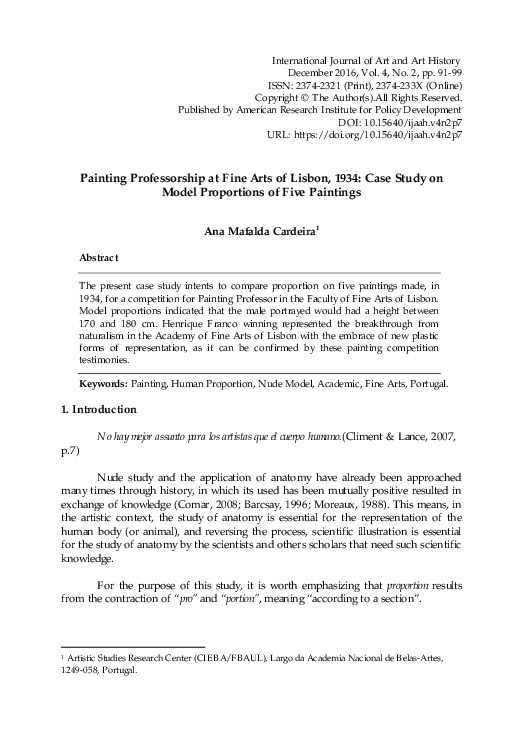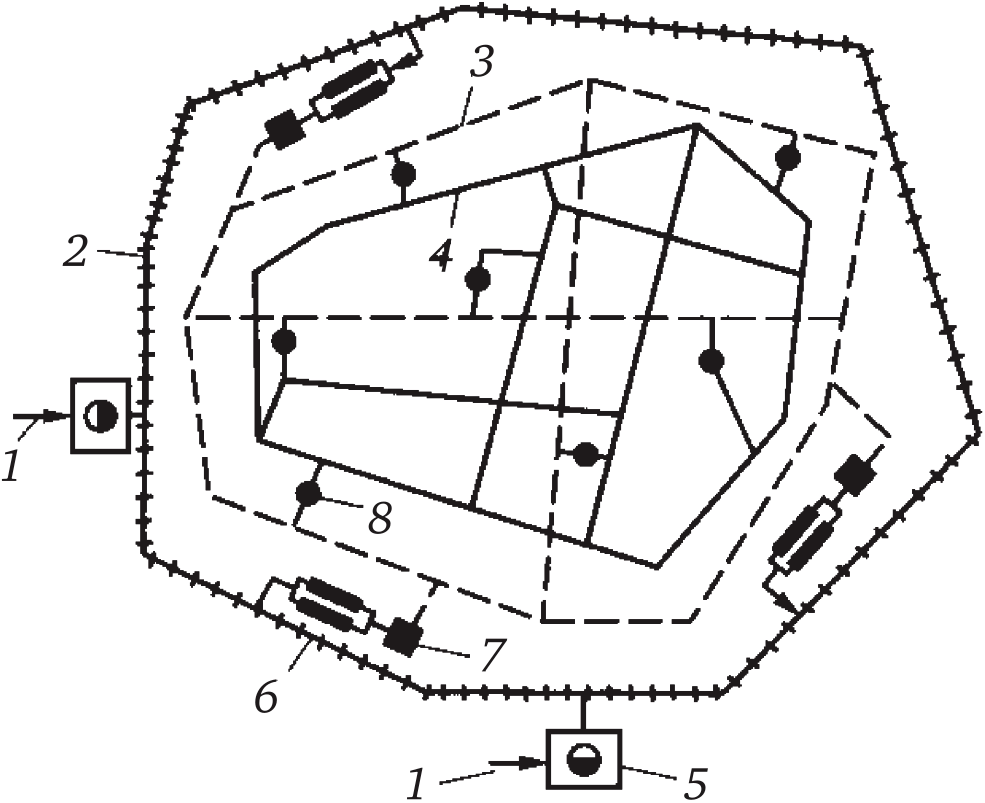Spatial Concepts In Fine Arts: Requirements For A Professorship

Table of Contents
Mastery of Core Spatial Theories and Practices
To effectively teach and research spatial concepts in fine arts, a deep understanding of core theories and historical practices is fundamental. This includes not only practical application but also the historical context and theoretical underpinnings of spatial representation.
Understanding Perspective and its Historical Evolution
Perspective, a cornerstone of spatial representation, has evolved significantly throughout art history. Understanding its evolution is crucial.
- Linear perspective: This system, developed during the Renaissance, utilizes converging lines to create the illusion of depth on a two-dimensional surface. Mastering the concepts of vanishing points, orthogonals, and the horizon line is essential.
- Atmospheric perspective: This technique uses variations in color and detail to suggest depth, with objects further away appearing less distinct and bluer. Understanding how atmospheric perspective contributes to the overall spatial experience is critical.
- Impact on Artistic Movements: The development of perspective profoundly impacted artistic movements. The Renaissance saw its flourishing, while Impressionists used atmospheric perspective to capture fleeting moments and the effects of light. Analyzing masterpieces from these and other periods, observing how artists manipulated perspective to achieve specific spatial effects, is vital.
- Examples: Studying works like Masaccio's Trinity (linear perspective) and Monet's Impression, soleil levant (atmospheric perspective) provides concrete examples of these techniques in action.
Knowledge of Spatial Relationships and Composition
Beyond perspective, understanding spatial relationships within a composition is critical.
- Positive and Negative Space: The interplay between positive (the subject) and negative (the background) space defines the visual impact of a work. Understanding how artists manipulate this relationship to create balance and emphasis is crucial.
- Figure-Ground Relationships: This concept explores how figures are perceived against their background, impacting the overall spatial organization. Analyzing how artists use contrast, color, and shape to define figure-ground relationships is key.
- Composition and Spatial Experience: The arrangement of elements within a composition dictates the viewer's experience of space. Understanding principles of visual balance, leading lines, and focal points is essential for creating compelling and effective spatial narratives.
Familiarity with Non-Euclidean Spatial Representations
Traditional Euclidean geometry doesn't fully encompass the diverse ways artists represent space.
- Challenging Traditional Representations: Movements like Cubism (Picasso, Braque) and Surrealism (Dalí, Magritte) revolutionized spatial representation, exploring fragmentation, multiple perspectives, and non-representational space.
- Multi-dimensional and Non-representational Space: Understanding how artists have moved beyond traditional perspectives to create multi-dimensional or abstract spatial experiences is crucial. Analyzing works that defy traditional notions of depth and perspective demonstrates a higher level of spatial understanding.
- Examples: Analyzing Picasso's Les Demoiselles d'Avignon or Dalí's The Persistence of Memory showcases the radical departure from traditional spatial representations.
Pedagogical Skills in Teaching Spatial Concepts
Teaching spatial concepts in fine arts effectively requires strong pedagogical skills. A professor must be able to communicate complex ideas clearly and engage students at all levels.
Developing Engaging Curriculum
Creating engaging and effective curriculum is paramount.
- Adapting to Different Educational Levels: A successful professor can tailor their teaching approach to suit various educational levels, from introductory courses to advanced seminars.
- Innovative Teaching Approaches: Incorporating interactive exercises, studio projects, and technology-based learning can enhance student understanding of spatial concepts.
- Integration of Technology: Using digital tools, such as 3D modeling software or virtual reality, offers opportunities to explore spatial relationships in innovative ways.
Effective Communication and Assessment
Effective communication and assessment strategies are essential for verifying student comprehension.
- Clear Communication: A professor must be able to explain complex spatial theories and concepts in an accessible manner, using a variety of teaching methods.
- Assessment Methods: Utilizing a range of assessment methods, including project-based assignments, critiques, and portfolio reviews, ensures a comprehensive evaluation of student understanding.
- Evaluation Criteria: Developing clear and specific criteria for evaluating student work focusing on spatial comprehension ensures fairness and consistency.
Research and Publication in Spatial Aspects of Fine Art
A commitment to research and publication is crucial for a successful Fine Arts professorship. This demonstrates ongoing engagement with the field and contributes to the broader academic conversation.
Identifying Relevant Research Areas
Research in spatial concepts in fine arts offers many avenues for exploration.
- Current Research Trends: Staying abreast of current research trends in art history, art theory, and related fields, such as psychology and neuroscience, is important.
- Original Research Contributions: Identifying opportunities to make original contributions to the field, perhaps focusing on specific historical periods, artistic movements, or theoretical approaches, strengthens a candidate's application.
- Interdisciplinary Collaboration: Collaborating with researchers from other disciplines, such as architecture, cognitive science, or design, can enrich research projects and broaden perspectives.
Developing a Strong Research Portfolio
Building a strong research portfolio is a critical aspect of securing a professorship.
- Publication in Reputable Journals: Publishing research findings in peer-reviewed journals and presenting at academic conferences is essential.
- Successful Research Projects: Demonstrating a track record of successful research projects related to spatial concepts in art showcases expertise and commitment.
- Effective Communication of Findings: Clearly and effectively communicating research findings through written publications and presentations is vital.
Conclusion
A deep understanding of spatial concepts in fine arts is crucial for achieving a professorship in this field. Mastery of core theories, strong pedagogical skills, and a commitment to research are all essential components. By developing expertise in these areas and building a strong portfolio, aspiring professors can enhance their chances of securing a position. Therefore, continue to cultivate your knowledge and understanding of spatial concepts in fine arts and related aspects, such as spatial perception and spatial design, to further your career goals.

Featured Posts
-
 Novela Zakona O Romski Skupnosti Kljucne Spremembe In Javna Obravnava
May 13, 2025
Novela Zakona O Romski Skupnosti Kljucne Spremembe In Javna Obravnava
May 13, 2025 -
 Evakuierung Braunschweiger Schule Aktuelle Informationen Zum Alarm
May 13, 2025
Evakuierung Braunschweiger Schule Aktuelle Informationen Zum Alarm
May 13, 2025 -
 Sabalenka Triumphant Miami Open Victory Over Pegula
May 13, 2025
Sabalenka Triumphant Miami Open Victory Over Pegula
May 13, 2025 -
 Gaza Hostage Crisis A Prolonged Struggle For Families
May 13, 2025
Gaza Hostage Crisis A Prolonged Struggle For Families
May 13, 2025 -
 Amokalarm In Braunschweig Die Neue Oberschule Im Fokus
May 13, 2025
Amokalarm In Braunschweig Die Neue Oberschule Im Fokus
May 13, 2025
Latest Posts
-
 Scho Vidomo Pro Oleksiya Poroshenka U 2024 Rotsi
May 13, 2025
Scho Vidomo Pro Oleksiya Poroshenka U 2024 Rotsi
May 13, 2025 -
 Cassies Husband Alex Fine At Courthouse Supporting Her Ahead Of Diddy Sex Trafficking Trial Testimony
May 13, 2025
Cassies Husband Alex Fine At Courthouse Supporting Her Ahead Of Diddy Sex Trafficking Trial Testimony
May 13, 2025 -
 Pregnant Cassie Shares Third Babys Gender Reveal On Alex Fines Birthday
May 13, 2025
Pregnant Cassie Shares Third Babys Gender Reveal On Alex Fines Birthday
May 13, 2025 -
 Programma Razvitiya Gazosnabzheniya Eao Ot Gazproma
May 13, 2025
Programma Razvitiya Gazosnabzheniya Eao Ot Gazproma
May 13, 2025 -
 Cassie Confirms Third Childs Gender A Birthday Surprise For Alex Fine
May 13, 2025
Cassie Confirms Third Childs Gender A Birthday Surprise For Alex Fine
May 13, 2025
